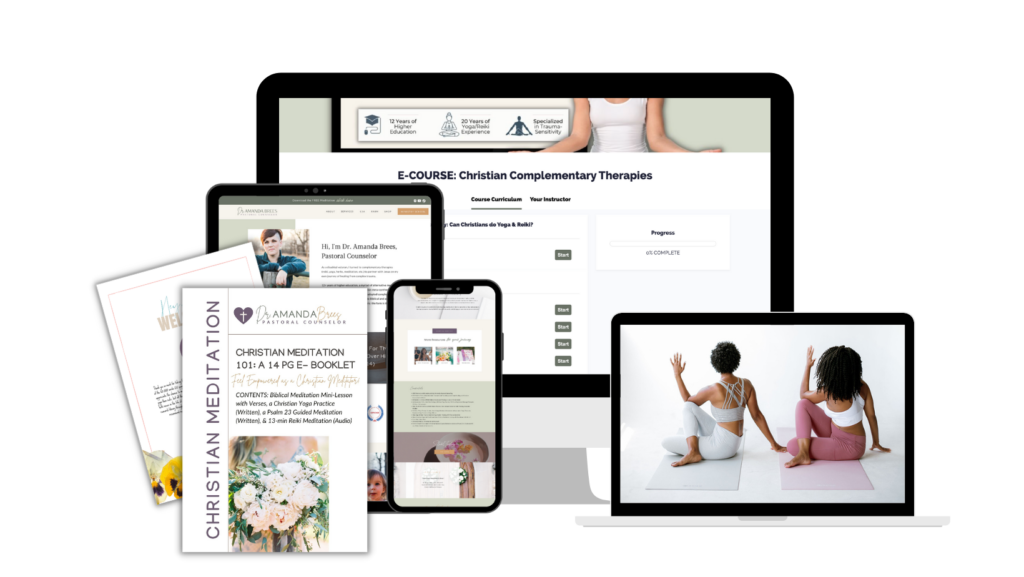Overview
Familial trauma theory is rooted in attachment theory. Attachment theory is the most well-researched theory of human development (Hughes, 2017). Dysfunctions of attachment lend themselves to a myriad of family systems chaos. Ainsworth and Bowlby (1991) were the founders of attachment theory. Different attachment styles stem from an infant’s initial bonds to their parents. Although they can change throughout the lifespan, these bonds can be either secure or insecure. Insecure attachment can be anxious or avoidant. Securely attached individuals learn healthy intimacy and trust that life and love are essentially good (Ainsworth & Bowlby, 1991). Lange-Altman et al. (2017) described those individuals with an avoidant attachment bond to a substance as a primary attachment that leads to addiction, leading to long-term sobriety failures. Wei et al. (2005) advocated for meeting underlying unmet psychological needs instead of modifying existing attachment orientations in therapy.

Introduction
This literature review surveys the complexities and nuances of pastoral counseling, healing ministry, familial trauma, and spirituality. Pastors who offer counseling live at the intersection between the worlds of mental health and spirituality. Cartledge (2013) described a clear connection between religion, health, and healing, mainly in Pentecostal settings. He advocated for the importance of lay-persons in the religious therapeutic process. Njus and Okerstrom (2016) describe a phenomenon where insecure attachment individuals live out their attachment style in their attachment to God. For some, God can serve as a secure base similar to a mother or father. Individual attachment styles can remain the same across a myriad of relationships, including with God. They advocate for an understanding of religion from an attachment perspective (Njus & Okerstrom, 2016). Baldwin et al. (2016) found healing Christian prayer effective in treating childhood and interpersonal trauma as an alternative treatment. Means (1997) described the evolution of pastoral counseling in America in response to the development of the managed care mental-health system. He encouraged pastoral counselors and advocated for a fork in the road for pastoral counselors to stay faithful to their theological callings in light of our intersection with mental health (Means, 1997).
The field of neurotheology and transpersonal psychology offer new insights regarding the role of pastoral counselors in the context of healing trauma. Integrative treatments for healing trauma of all sorts utilize allopathic clinical psychotherapy in conjunction with non-traditional healing methods. Complementary therapies (CTs) are complementary and alternative medicine (CAM) techniques that fall outside of the world of allopathy. According to Sears and Chard (2016), the third wave of cognitive-behavioral therapies implement CTs such as mindfulness into the therapeutic process. They assert that psychotherapy as a standalone intervention can be ineffective in treating trauma symptoms. The complexity is due to the top-down and bottom-up methods needed to address healing trauma fully.
Conversely, meditation without psychotherapy can cause potential harm in the context of trauma in some instances, such as dissociation. Mindfulness-based cognitive therapy (MBCT) integrates mindfulness into the trauma treatment process (Sears & Chard, 2016). This phenomenon is happening in civilian and military treatment centers. Hull et al. (2015) explained that a movement is happening within the Veteran’s Administration (VA) to embrace CTs. These findings provide support for the notion that the integration of CTs into allopathic treatment is potentially superior to CTs as a standalone treatment (Macy et al., 2018). Although the adoption of CTs is exciting, they are fraught with concerns for evangelical Christians due to the allegations that the practices are rooted in Hinduism and Buddhism. Perspectives vary greatly regarding whether or not CTs are suitable and adaptable for conservative Christians.

In this regard, complementary therapies are becoming vital to the process of healing trauma. Furthermore, neuroplasticity is lending itself to further confirmations regarding the efficacy of contemplative practices in the third and fourth waves of healing. In the context of familial trauma, the trauma was often complex due to the interpersonal nature of betrayal. This type of trauma is emerging as complex post-traumatic stress disorder (C-PTSD). According to Gulden and Jennings (2016), yoga therapy is especially effective in addressing complex trauma. Yoga helps regulate the autonomic nervous system (ANS). Their study found that yoga helped survivors better engage with life, and it helped reduce their symptoms. This healing existed regardless of the type of yoga the participants used (Gulden & Jennings, 2016). Pence et al. (2014) also found yoga Nidra meditation effective in sexual trauma. So, although CTs are helpful, are they indicated for Christian adult survivors of familial trauma given their Buddhist and Hindu associations? This is the focus of this literature review.
Description of the Literature Review
This review addressed origins and major theories, with special attention paid to attachment theory and family systems theory. The review focused on the evolving theory of familial trauma which appears to be a subset of complex betrayal trauma. Furthermore, special attention was paid to whether or not CTs are effective and indicated in helping adult survivors of familial trauma. The debate regarding the roots of CTs and CAM in America was given considerable attention in the context of third and fourth-wave behavioral therapies. The goal was to identify the complexities and nuances of the arguments from differing perspectives. Although there was no way to answer the argument in its entirety, this was an attempt to isolate the mechanism of action that underlies CTs effectiveness in both healing and spirituality. Given the implications found, the theological pros and cons were weighed against the effectiveness in an attempt to catalyze a greater understanding of what and how needs adapting if the practices are indeed adaptable.
Literature Review Search Strategy
A large number of articles and books (N = 500) were collected over the course of 3 years of doctoral study at Liberty University; the number 500 was selected for practical reasons (i.e., a number manageable by one researcher). Journal articles were selected due to their peer-reviewed status. Books were only included if they were written by a mental health practitioner with at least a graduate degree in mental health. Books were given second priority to peer-reviewed journal articles. The journal articles were stored in a data collection software. They were sifted for dissertations and duplicates. They were then narrowed down to the top 200 articles that were most recent or specific to the study topics: Healing/ministry, familial/trauma, and complementary therapies. Seminal and specialty articles were given priority. Articles that addressed two of three topics were also given higher priority. Articles that lacked scientific rigor and book reviews were excluded. Again, a maximum of 200 articles was selected for practical reasons. These 200 articles were printed, put into binders, and organized by topic. The abstracts, implications, and findings sections were the primary source of information used in the literature review. During the reading of the literature, 20 articles/books were removed for lack of specificity, irrelevance, or age. A total of 180 (N = 180) books and journal articles were included in the final literature review and study for this dissertation.
Theoretical Framework
Origination and Major Theorists
Attachment Theory
Attachment-Related Relationship Issues. Peng et al. (2021), explained that attachment issues exist on a spectrum from mild to severe. In severe cases, insecure attachment symptomology can become consistent with a diagnosis of borderline personality disorder (BPD). They also found mediating solid pathways between maladaptive emotional regulation and insecure attachment styles rooted in childhood trauma (Peng et al., 2021). Unfortunately, one of the most significant impacts of childhood trauma lives out in the symptomology of these often-stigmatized adult survivors and their marriages. The impact of childhood trauma is far-reaching. This cycle propagates a negative intergenerational attachment pattern as traumatized parents struggle in their marriages and parenting from one generation to the next.
Insecure Attachment and Personality Disorders. Wei et al. (2005) correlated anxious-avoidant attachment as indicators of relationship struggles. Perfection protects people from inadequate attachment bonding by giving them needed autonomy, competence, and the ability to relate. Attachment disorders lend themselves to devaluing one’s needs because they are taught that they are incompetent by caregivers and that their needs are part of what makes them unlovable (Wei et al., 2005). Jowett et al. (2019) tied borderline personality disorder (BPD) to an insecure attachment style. This pattern leads to emotional dysregulation, promiscuity, and substance abuse. These persons are prone to crisis and behave in self-destructive patterns. The impact of complex trauma can disturb their personality due to the impact of trauma over time. Eng et al. (2001) explained that anxiously attached individuals experience more depression and less life satisfaction. Social anxiety mediates the connection between attachment and depression. Avoidant individuals avoid their needs for attachment by perceiving others as untrustworthy. Anxious individuals tend to experience excessive fears of being abandoned, jealousy, and hypervigilance. The connection between social anxiety, negative affect, anxious attachment, and lack of romantic success in relationships is tied to the negative spiral of anxious individuals to create negative social dynamics that propagate feelings of depression (Eng et al., 2001).
Whiffen et al. (2001) found clear evidence that insecure attachment propagates negative working models of self and others, leading to increased depression in relationships. They correlated depression with higher conflict in marriage and their support systems. Anxious individuals tend to view themselves as unlovable and others as untrustworthy. Their parental patterns continue from childhood into their adult romantic relationships. According to Whiffen et al. (2001), these individuals with negative working relationship expectations project negativity onto their social situations and propagate relational-related depression. Individuals with insecure attachment struggle to value achievement and autonomy to feel good about themselves. This tendency increases their risk of depression. Relational attachment issues can also focus on current relationship interactions associated with depression, as their self-perfection and other perceptions get skewed. These marriages cause high levels of distress. Conflicts in these marriages get viewed as feeling unlovable. The spouse can become disillusioned living with a self-absorbed and hostile partner. Depressed women tend to demonstrate autonomy in marriage, leading to increased conflicts, which further exacerbates attachment-related depression. Whiffen et al. (2001) described a negative feedback loop created in marriages creating an attachment-based depression.
Öztürk and Mutlu (2010) found a direct correlation between social anxiety and insecure attachment, especially in the context of romantic relationships. Lowyck et al. (2008) described attachment injuries happen when one partner is unavailable to support and meet the needs of the other in times of distress. The implications for their findings involve clinicians intervening to assist insecure partners in creating a more secure relationship. Lowyck et al. (2008) described an increase in attachment satisfaction among securely attached individuals. Self-critical and dependent persons struggle more with forming attachments and individuating in the process of relationship. Secure, avoidant, and anxious-avoidant represent the three categories of attachment with subsections of fearful-avoidant and dismissive. Personality development has a significant impact on attachment development (Lowyck et al., 2008). This dynamic mirrors the initial attachment origin theories rooted in the security base of the mother. Novak et al. (2017) found the need to focus on the emotional availability, responsiveness, and engagement of both partners to decrease attachment-related depression in couples with insecure attachment patterns. These patterns of chaos unconsciously partner survivors with those who seem to help them recreate the family home life they were raised in (Love & Shulkin, 2001).

Excessive Reassurance Seeking. Adult survivors suffering from developmental trauma suffer from self-created patterns of isolation rooted in attachment. Shaver et al. (2005) explored a phenomenon formally termed excessive reassurance-seeking (ERS). ERS is rooted in an anxious attachment style. Dysphoric people doubt their worth and, therefore, seek too much reassurance from their romantic partners. They perpetuate a system of rejection through this self-fulfilling prophecy. The syndrome is rooted in inconsistent early childhood attachment figures. In an effort to reduce attachment anxiety, they tend to criticize their partners, keep their options open, as well as maintain distance between themselves and their partners. Anxious attachment tends to increase the anxious partner’s depression. Avoidant attachment tends to increase both partners’ depression (Shaver et al., 2005).
Do you want to learn more about this topic?
Check out the e-course!

References
Brees, Amanda Lynne, “The New Age of Christian Healing Ministry and Spirituality: A Meta-Synthesis Exploring the Efficacy of Christian-Adapted Complementary Therapies for Adult Survivors of Familial Trauma” (2021). Doctoral Dissertations and Projects. 3168.
https://digitalcommons.liberty.edu/doctoral/3168

+ show Comments
- Hide Comments
add a comment